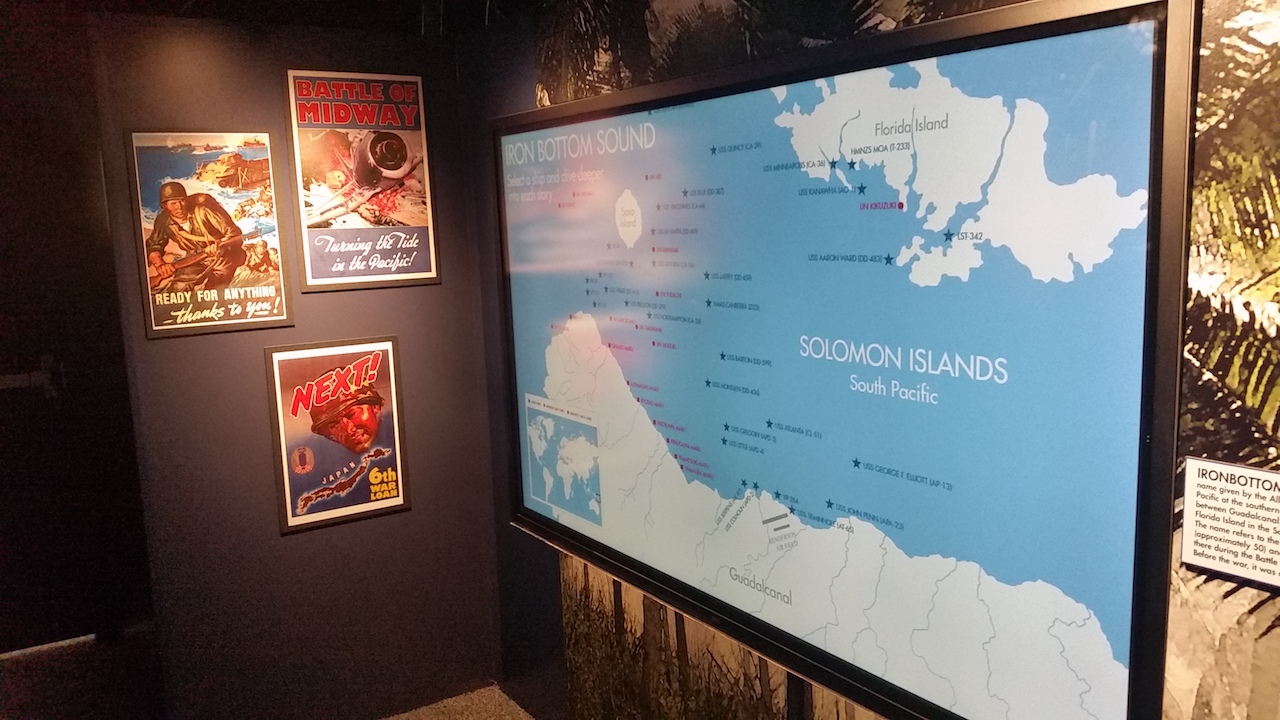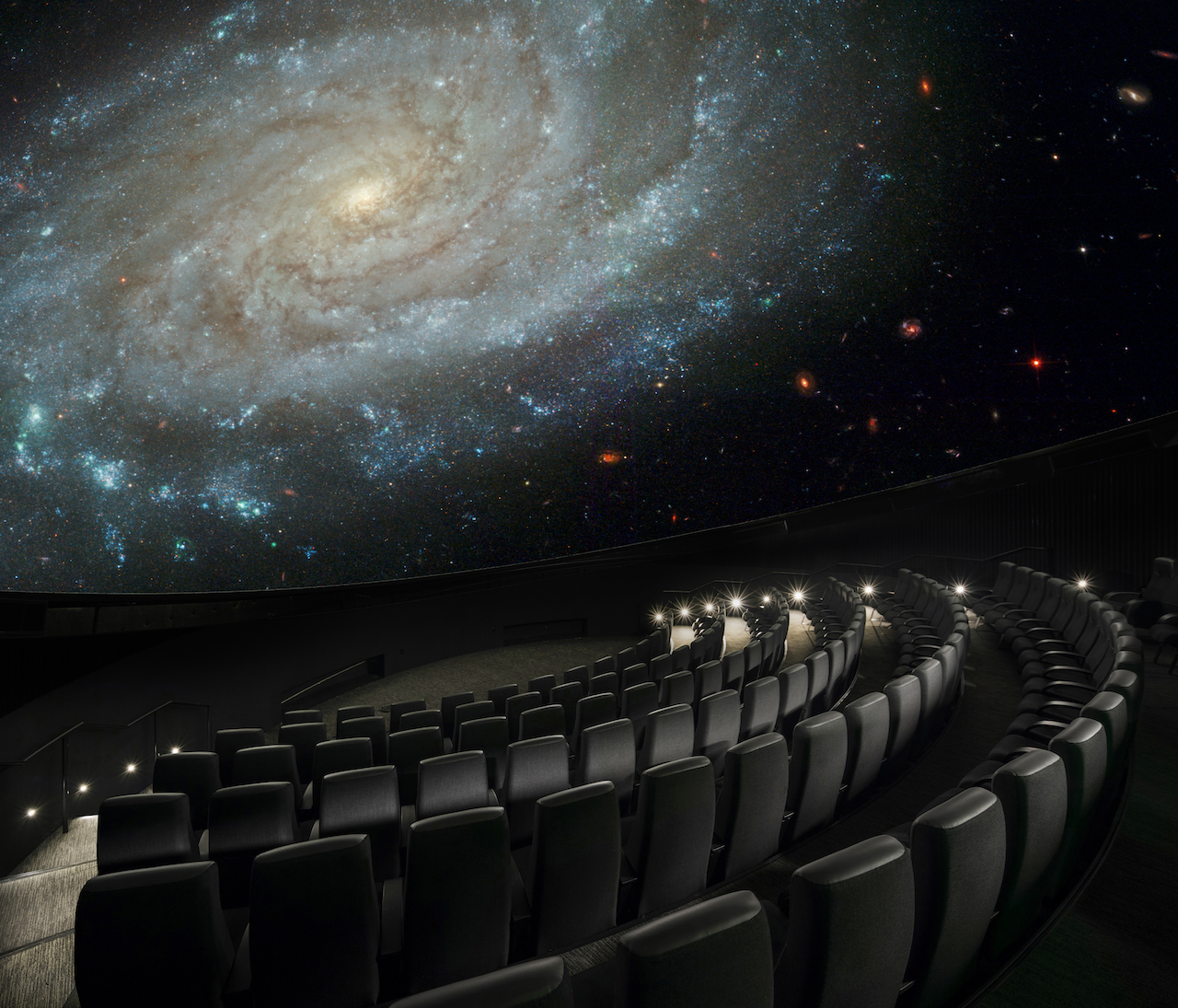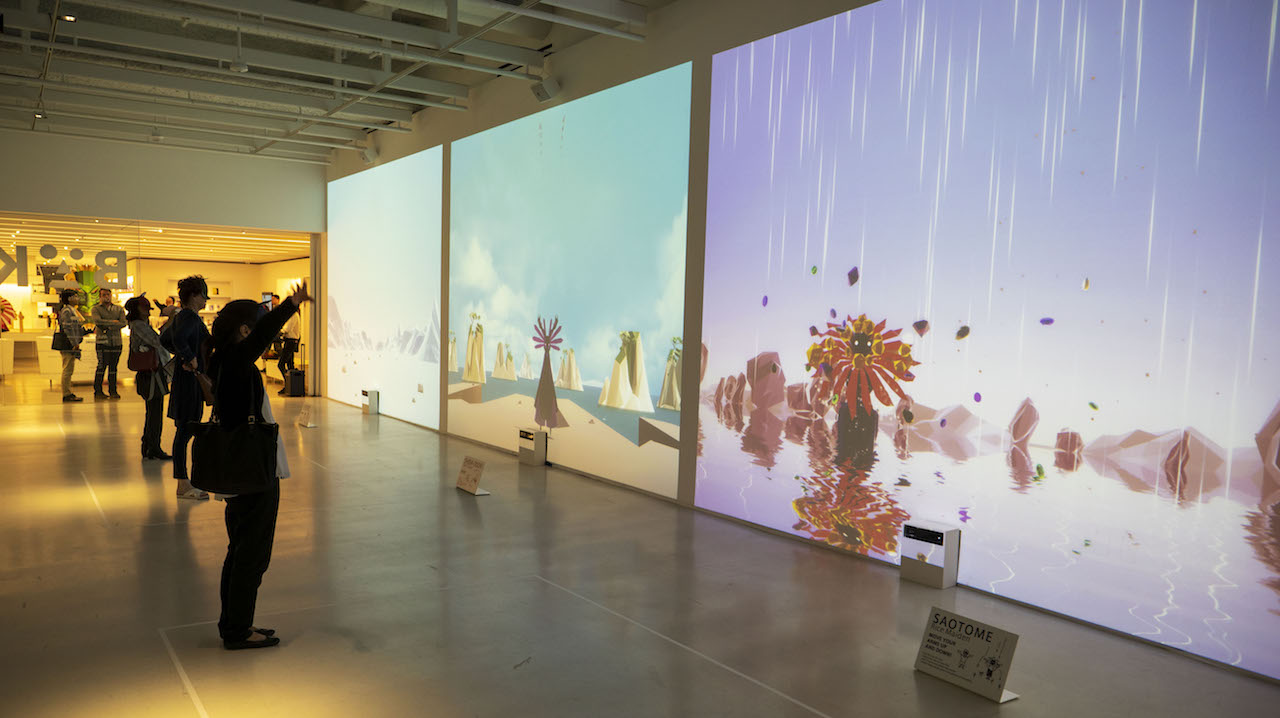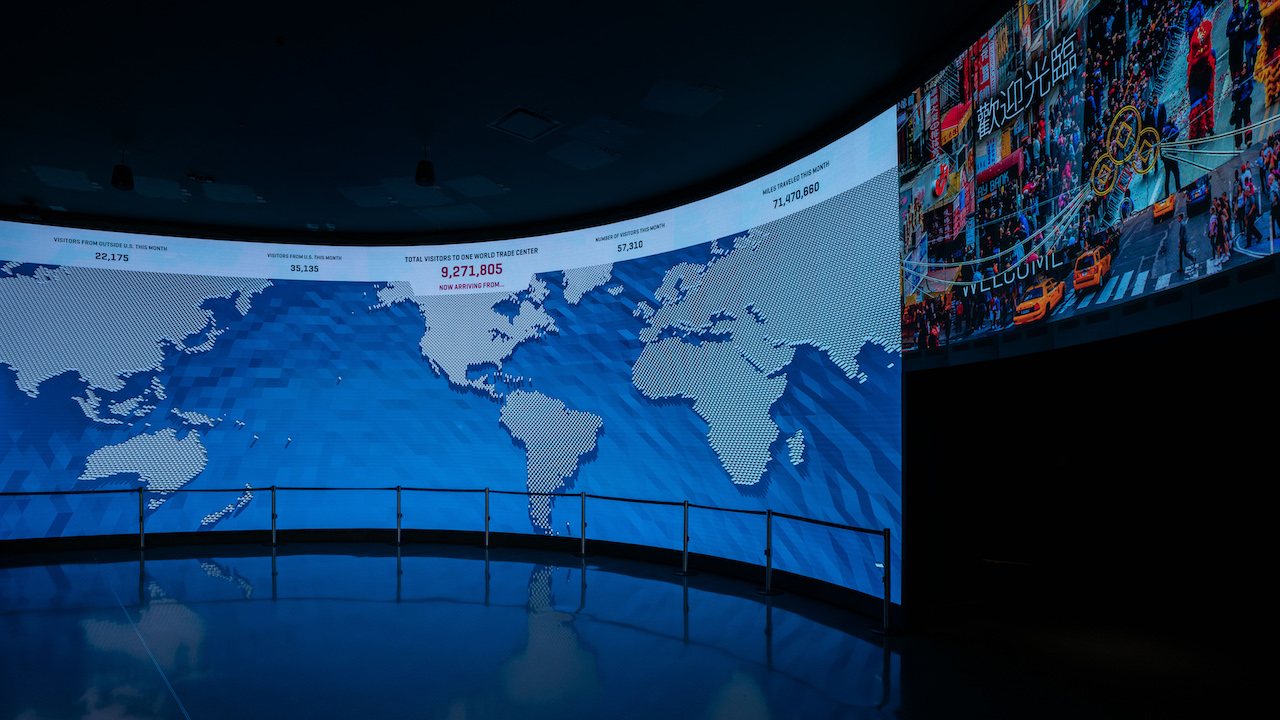Museums Step Up Engagement With Next-Level Tech
For many years, museum exhibit designers have used video as a medium to help tell a more in-depth story. Oftentimes these video experiences were set up in small, dark, and somewhat foreboding rooms and did not feel part of the natural flow of the exhibit. In recent years, however, audio, video, and other media have emerged to become integral components in storytelling throughout a museum goer’s experience.

Founded in 2009 and located in Century City neighborhood of Los Angeles, the Annenberg Space for Photography has always used flat panels, projectors, and video walls to display content and digital signage.
“To complement each exhibition, we produce a 20–25-minute documentary that allows our visitors to gain a better understanding of the subject being discussed in the exhibition, along with the photographers that are documenting the work,” said Kat Kirsch, manager, communications at the Annenberg Foundation. Until the end of 2019, the documentaries were rear-projected onto a 13-foot glass screen, which left the images looking flat—and in addition, the overall projector room took up valuable space.
On February 9, 2020 guests were invited to the Annenberg Space for Photography for the opening of the Vanity Fair: Hollywood Calling exhibit. After touring the exhibit and watching a 22-minute documentary, guests were treated to a live stream of the 92nd Academy Awards on Samsung’s The Wall, an 18.25-foot MicroLED wall. This also marked the first U.S. installation of an 8K version of The Wall.
“The documentary is a major feature of the exhibition and with our new The Wall, we’re able to amplify our visitor experience,” Kirsch said. “This magnificent screen allows us to feature the work and tell the stories of the world’s best photographers in their most vivid form.” There was a significant difference between the image produced by the rear-projection system used last year and the new MicroLED wall. Kirsch said, “it was most noticeable in the contrast and overall color that the Photo Space was now able to deliver.”
Produced by Radical Media, the Hollywood Calling documentary allows visitors to get a look at the history and the making of the Hollywood Issue, one of Vanity Fair’s most popular issues. The documentary takes viewers behind the scenes to see how established and up-and-coming stars are selected for the coveted Vanity Fair cover. “The short film concludes with a visit to the set to watch it all come together,” Kirsch said. “Seeing the images on the large screen really changes the experience and the stars become larger than life.”
Completing the experience, a Q-SYS Core 500i processes audio through Powersoft’s Ottocanali amplifier to seven speakers and two subwoofers.
A daily selection of features, industry news, and analysis for tech managers. Sign up below.
“As we collaborate with production companies like Radical Media, we can develop our documentaries to utilize the system to translate experiential audio to complement beautiful imagery,” Kirsch said. “The screen adds another element to the whole museum experience and has very much become a highlight for our visitors.”
Complete Immersion
For David Canfield, his current job is a culmination of lifetime of careers and passion. Upon graduating high school in 1987, Canfield joined the US Navy and served for two years on the USS Iowa (BB-61). The Iowa was decommissioned in October 1990. Once transitioning to the Naval Reserves, Canfield’s jobs in software engineering and data operations at various companies landed him at Google as a program manager. “There are not too many reasons I can think of to leave Google,” Canfield said. But in 2012, he accepted the position of vice president and CIO of the Pacific Battleship Center–Battleship Iowa Museum.
From the moment visitors board the Battleship Iowa Museum Los Angeles, they are immersed. “We are a unique venue where our primary artifact is the ship that you are within,” Canfield said.

The museum deploys a variety of audio and video equipment and technologies from flat panel displays, overhead projection, effect projection for water reflection, passive sound effects that create rumbling engines, banging pots and pans and other sounds, and augmented reality. “We have even attempted to use 4D or scent dispersion with mixed results,” Canfield said. “As it turns out, that is much harder than you might think.”
The museum relies on technology to augment the visitor experience. “I think that is the key to our strategy,” Canfield said. “We do not want the visitor to experience to be ‘tech,’ we want them to experience the ship. The tech helps bring the experience alive.”
In the Bob Ballard "Lost at Sea" exhibit, a water effect has been created using water-reflection projectors to produce an overlapping effect. “In that same area we created a mockup of an ROV (remotely operated vehicle) and installed a couple of ‘Pepper's Ghosts’ with sea creatures such as jellyfish and squid to provide depth to the experience,” Canfield said. A multi-channel sound system is installed throughout the exhibit that plays period music from World War I and II, as well as passive submarine sounds. “The sound is driven through an amplifier and into the zones using a mixer to JBL speakers and a subwoofer,” he said. Despite a small budget, Canfield said, “the effects are really nice.”
The integration, programming, and most of the technology development for the museum has been done in-house. Using an augmentation strategy has allowed the team to create a more immersive experience without being over the top. “We have a lot of very talented people on our crew and they bring that talent to the battleship in some pretty innovative ways,” Canfield said. “Subtle cues like ambient noise, visual effects, and scents can really add to experiencing the Battleship as she was when in service, rather than just a walk through a cold, obsolete chunk of steel.”
The museum partnered with San Diego-based Guru, a pioneer in museum apps. The robust application provides a great deal of content and facts about the Iowa. “This releases the guides to be storytellers and to interact on a more human level,” Canfield said.
Built into the app are several augmented reality (AR) experiences. These are triggered by pointing a smartphone at a trigger image on a placard near the exhibit and then panning the device around the space to see what it looked like when the ship was in service. “The AR includes a look ‘through the deck’ into the after steering compartment, a view of the galley when it was in service, a 3D model of the ship (sponsored by World of Warships) and a chat with FDR in the captain's cabin,” Canfield said.
Museums are moving from "objects under glass" to more interactive and immersive experiences. To keep the interest of younger generations innovative technology solutions are expected and are also needed to enable storytelling to people with various physical challenges. “In our case, climbing shipboard ladders and stepping over ‘knee knockers’ is impossible for people with even minor mobility challenges,” Canfield said. “Through the use of technologies such as VR and projection, we will be able to allow a museum goer to experience much more of the ship. In addition, there are areas of the ship that might never be opened to the public, and by use of immersion technologies we can bring those areas to life.”
Whether to illuminate photography or transport visitors to another time and place, multiple technologies are helping facilitate the engagement of the next generation of museum guests.
A Panoramic Display
In 1989, the Panorama 6th October Museum in Cairo, Egypt, was established to commemorate the 6th October War that took place in 1973. As part of an extensive renovation, Egyptian integrator Audio Technology S.A.E equipped a trio of halls at the museum with the latest audiovisual technology to bring an array of historical exhibits to life.

Six Christie D13WU-HS projectors were installed to create a striking U-shaped display, which is used to showcase a film that gives an additional overview of the war in a bright and seamless 10K resolution display. The unique shape allows for the audience to feel a part of the video, as it fills their visual field, further immersing them in the content.
In a cylindrical room, nine Christie DWU1075-GS laser projectors were installed to create an impressive 360-degree screen projection. The unique display shows footage captured during the 2011 and 2013 revolutions that reflect the political situation in Egypt at the time. The immersive display matches the unusual shape of the museum building and provides the platform for a captivating educational experience.
The compact sizes of Christie’s projectors, the use of a special Christie mounts, and the built-in warping and blending options in the projectors enabled the technology to fit into the spaces effectively.
The museum has also been updated throughout with 3D “holograms” of weaponry, digital signage displays, wireless tour guides, and an exterior projection mapping display on the façade of the building.
A Show Befitting the Stars
Having undergone an extensive $79 million renovation, Minnesota’s Bell Museum is home to North America’s first “seamless” dome planetarium in its Whitney and Elizabeth MacMillan Planetarium.

The planetarium pairs its cutting-edge technology with the University of Minnesota’s latest data research to produce visualizations that take audiences from the far reaches of the universe to deep inside the human brain.
Sweden-based digital planetarium solution provider Sciss AB specified a 4K dual-projector system that reflected 2.0 ft. lambert of brightness straight back off the dome of 45 percent reflectivity, while projecting white at full power. The solution required more than 10 megapixels on the dome and less than or equal to 3.0 average arc minutes per pixel, as well as a native contrast ratio of 2,000:1 and brightness at 5,000 lux per projector.
The installed solution for the 16-meter, 120-seat planetarium features an Astro-Tec Ulteria Seam Dome, and Digital Projection’s INSIGHT Dual Laser 4K phosphor illumination projectors featuring 27,000 lumens of brightness and 20,000 hours of lifespan to deliver real-time rendering and full-dome videos using Uniview software and ColorSpace Theatre Control.
“The laser system was our preference because of its superior image quality and long-lasting light source,” said planetarium manager Sally Brummel. “The final visual aspect is very impressive and the image is as rich and bright as I’ve expected.”
Fostering Cultural Appreciation
The 2019 world debut of the exhibition BAKERU: Transforming Spirits at Japan House Los Angeles delivered an immersive visitor experience, combining state-of-the-art technology with multimedia and artistic elements.

Panasonic’s mission of “A Better Life, A Better World” aligned with Japan House Los Angeles’ global mission of fostering appreciation for Japan around the globe. Panasonic, in collaboration with Japanese creative art and design studio WOW and ClearTech Media, created an immersive environment where guests can transform into projected characters and participate in several festival scenes known in the Tohoku region of Japan.
“BAKERU is unique in that it features traditional folk tradition of Japan and at the same time presents Japan’s high technology and top-notch media art,” said Yuko Kaifu, president of Japan House Los Angeles. “Because of the interactive nature of the exhibition, people can have fun and also learn about the folklore tradition at the same time.”
WOW created four large projections to create the visitor experience. Using Microsoft Kinect and its dynamic aggregating sensor, movements are captured in real time as participants transform into projected scenes with Panasonic’s PT-RZ870 Series projectors and ET-DLE085 and ET-DLE035 lenses. “One of the important components of this installation is the sense of immersion,” said Kaoru Kudo, visual art director at WOW. “The Panasonic projectors play the most crucial role, which is to send images of the visitors without delay, beautifully and consistently throughout a long exhibition period.”
Top of the World
The centerpiece of the rebuilt World Trade Center complex in New York City, One World Trade Center is the tallest building in the Western Hemisphere. In May 2015, the One World Observatory opened, offering views of New York City’s iconic sights, surrounding waters, and skyline from the building’s 100th, 101st, and 102nd floors.
In early 2019, Legends Hospitality—which developed and operates the One World Observatory—determined that key upgrades were necessary to improve the guest experience, leading to projects that integrated new display technologies.

Previously, the main driving attraction of the Global Welcome Center was a large projector system. “The display appeared washed out and didn’t properly introduce the space to guests in the way we wanted,” said Delfin Ortiz, general manager at Legends One World Observatory. “Needless to say, this was not the first impression we wanted to portray to guests,” Ortiz said. In addition, lifts were needed to service the projectors located on the ceiling, which could not be done while the observatory was in operation. “These challenges drove us to reevaluate and consider reinvesting in technology to create an introduction fitting with this world-class attraction.”
The update involved replacing the projector system with a curved and expansive floor-to-ceiling Planar TVF Series LED video wall installation with a 1.8mm pixel pitch (TVF1.8). Named the Welcome Wall, the installation comprises two adjoining Planar TVF Series LED video walls—a 47.6-foot-wide, 15.6-foot-high wall array in a 24x14 configuration and a 15.9-foot-wide, 7.8-foot-high array in an 8x7 configuration—that create one contiguous and seamless digital surface.
The Welcome Wall greets visitors with a large world map that transforms into a rotating globe and back to a map at regular intervals. Guests buying tickets online or at the kiosk are asked to indicate their hometown, and when their ticket is scanned at the security check, their hometown is highlighted on the map. The Welcome Wall recognizes the global diversity of people that visit One World Observatory by displaying and rotating the word “welcome” in multiple languages.
“The new technology allows us to do what we originally had envisioned—to create a ‘wow moment’ for our guests,” Ortiz said. “Visitors regularly gather in front of the video wall for pictures. We feel it’s a great way to connect with visitors.”

Cindy Davis is the brand and content director of AV Technology (AVT). She was a critical member of the AVT editorial team when the title won the “Best Media Brand” laurel in the 2018 SIIA Jesse H. Neal Awards. Davis moderates several monthly AV/IT roundtables and enjoys facilitating and engaging in deeper conversations about the complex topics shaping the ever-evolving AV/IT industry. She explores the ethos of collaboration, hybrid workplaces, experiential spaces, and artificial intelligence to share with readers. Previously, she developed the TechDecisions brand of content sites for EH Publishing, named one of the “10 Great Business Media Websites” by B2B Media Business magazine. For more than 25 years, Davis has developed and delivered multiplatform content for AV/IT B2B and consumer electronics B2C publications, associations, and companies. A lifelong New Englander, Davis makes time for coastal hikes with her husband, Gary, and their Vizsla rescue, Dixie, sailing on one of Gloucester’s great schooners and sampling local IPAs. Connect with her on LinkedIn.
